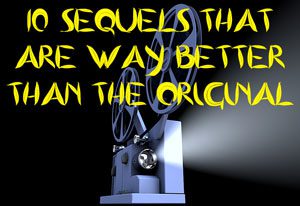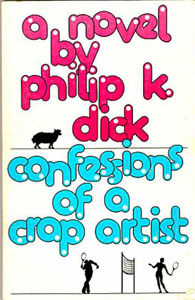“Confessions of a Crap Artist” (1975) was the public’s introduction to Philip K. Dick’s non-science-fiction novels. Even though he wrote it in 1959 – along with eight other mainstream novels from 1950-60 – it wasn’t published until a decade and a half later, and it was the only non-SF book published in his lifetime. The rest were published posthumously, most from 1984-88, and the last two in 1994 and 2007.
Small lives in the Bay Area
“Crap Artist” is a good introduction to PKD’s non-SF writing, as it features the touchstones of small lives lived in the Bay Area. He starts with the perspective of a nut, Jack Isidore (a name he would recycle for another weird dude in 1968’s “Do Androids Dream of Electric Sheep?”).
The title does refer to Jack, but while the title and the starting point suggest this is about Jack’s life, he’s merely one of several intertwined 20- and 30-somethings, four of whom alternate at the story’s reins.

“Confessions of a Crap Artist” (1975)
Author: Philip K. Dick
Composition year: 1959
Genre: Marriage drama
Setting: Bay Area, 1959
PKD sometimes uses the first-person perspective of one of these four, and sometimes uses a third-person omniscient perspective following one of them. I’ve heard the author was both lauded and criticized for the alternating of POVs back in the day, but I find “Crap Artist” flows smoothly, perhaps because this approach is more common now (albeit still unusual).
Jack is what you’d think of as a nut, with his collections of milk bottle caps, rocks and shopper magazines, along with notebooks of odd facts. When he recounts his folks cleaning out his room while he’s serving in World War II (they don’t allow reading material in the house!), it illustrates how he is apart from the world, and even his family.
A crumbling marriage
Jack moves into his sister Fay and brother-in-law Charley’s house in rural Marin County, giving him a front-row seat to a crumbling marriage. PKD, who was married and divorced five times, is a master at showing the weird ways people’s minds work in a manner that’s relatable to everyone.
A textbook example is when Charley builds up a slow-boiling rage from Fay asking him to buy Tampax for her at the store. One second he hands her a gift of canned clams, the next second he punches her in the chest.
This presages other passages in “Crap Artist” wherein a person – often Charley, but also Nat, the next man to get mixed up with Fay – makes a wild swing in their mind, sometimes going from considering suicide to deciding that everything is fine. PKD’s penchant for writing all happenings in the same level tone plays especially well in his non-SF books, often resulting in wry humor and sometimes in genuinely shocking occurrences.
The reason they are shocking is not a lack of stage-setting. Rather, we get deep into the minds – and the internal “logic,” such as it is – of these four people. While PKD doesn’t take a side in the sense of having heroes and villains, “Crap Artist” presents a preponderance of evidence that Fay is psychotic – not in the overt fashion seen in movies and TV, but in a more mundane fashion recognizable to people who know her well.

Charley and Nat are both under her sway, despite their better judgment, and even the judgment of Fay herself. She is seeing a psychiatrist, and she flat-out tells Nat that she wants him to stand up to her and not automatically do everything she asks.
Struggling with changing gender roles
Fay isn’t necessarily a stand-in for all women, but Nat at one point reflects on changing gender roles and ponders the benefits of letting his wife make all the decisions. But it doesn’t sit quite right to him; embracing a subservient role would be embarrassing.
PKD understands men better than women, naturally, but on the plus side, “Crap Artist” becomes a snapshot of how mid-century California men flailed amid conflicting societal expectations of men. And since shifts in gender roles didn’t stop in that decade, in that place, the novel is still widely relatable today.
We see institutions and practices that are still in place, such as a court hearing that’s a required ritual for a divorce. The author also digs into everyone’s domestic and financial situations, never far from their minds. The country house that’s expensive to maintain becomes a robust fifth character.
From PKD’s matter-of-fact portrayal, we see how crazy and darkly funny life can be, even when it’s led by relatively normal people in contemporary earthbound settings. Jack is the “crap artist,” the recognizably crazy one. But “Confessions of a Crap Artist” posits that craziness is actually the default setting of modern life.

